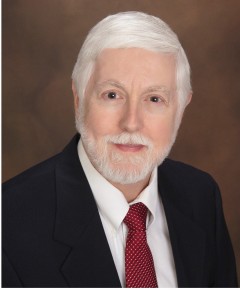[Editor’s Note: The following article was published by The Hill and is republished here with permission.]
I’m a longtime member of the American Medical Association and of my specialty organization, the American Psychiatric Association. Without their activism, the medical profession would long ago have been reduced to an over-regulated trade, patient rights would be much less respected, and diagnosis and treatment guidelines would be less well validated.
I’m also chronically disappointed in these organizations. As in most hierarchies, their leadership rises from within. So their official positions become iced in through generations of giving a cold shoulder to dissent.
As to its claim that the AMA represents all American physicians, which was mostly true in the 1950s when 75% of U.S. physicians were members, some perspective is in order. The latest available figures from 2013 showed that the AMA had only about 228,000 members, or 22%, of the total 1,046,000 U.S. physicians.
Last week, in the aftermath of the Pulse nightclub shootings in Orlando, the AMA announced it was expanding its endorsement of waiting periods and background checks for handgun purchases to cover purchases of all firearms. Here comes another knee-jerk, illiberal reaction to tragedy that ignores reality and further, uselessly burdens legal firearms purchasers. Sadly, following the anti-gun playbook has been characteristic of the AMA for almost 30 years, escalating since 2001.
The AMA continues to support “mandated penalties for crimes committed with the use of a firearm, including. . . illegal possession.” But tellingly, its statement advocates “stricter enforcement” of what it terms “gun safety legislation,” not of criminal laws that would take criminals off the streets. It imagines that waiting periods and background checks can keep guns “out of the hands of dangerous persons.”
The AMA also intends to lobby for the reversal of the “legislation that for 20 years [the AMA claims] has prohibited the Centers for Disease Control and Prevention (CDC) from researching gun violence.” Yet the 1997 law in question only prohibits using federal funds “to advocate or promote gun control.” There have been steadily increasing numbers of studies on the role of guns in violence ever since, just no federally-funded anti-gun rights campaigns.
It’s extraordinarily frustrating to see my colleagues acting on irrational beliefs instead of on the science we were all trained in. These points have been made many times before, but let’s just summarize:
- There are well over 300 million firearms in this country in civilian hands and in at least one third of households, for 99% of which nothing goes wrong.
- In fact, law enforcement often shoots less accurately in crises than civilian responders. And concealed carry permit holders are essentially the most law-abiding segment of the population.
- Criminals do not subject themselves to gun laws. Background checks and waiting periods cannot change this because illegal sales, straw purchases and thefts are by far the most frequent ways that guns used in crimes are acquired.
- The majority of Americans may like the idea of background checks (already mandated for any commercial sale of a firearm) but they reject registration, which is always part of political “compromises” and could enable confiscation someday.
- The seriousness with which Americans “cling to [their] guns” under the Second Amendment is shown by 90-98% non-compliance with laws in New York and Connecticut requiring registration of AR-type semiautomatic rifles.
Above all, there is nothing about guns or “gun violence” that can be addressed as a “public health issue.” Labeling gunshot injuries and deaths as a “public health crisis” is a ruse. The dramatic decreases in firearms homicides and accidents over the last 30 years (firearm suicides have unfortunately stayed fairly steady) have taken place while firearm ownership in the United States has dramatically increased.
The AMA and other medical societies persistently oppose our right to keep and bear arms that is enshrined in the Bill of Rights. Their rationale for doing this—the theory that there is something unique about “gun violence”—is nonsense. Calling firearm legislation that attacks Americans’ constitutional rights “gun safety legislation” is a diversion. “Gun safety” to firearm owners means handling guns safely. To anti-gun activists, it means restricting legal access to guns.
Perhaps most discouraging is that my profession, usually rigorous in assessing risks versus benefits in individual treatments and in public health analysis, has always refused to look at the enormous benefit of legal gun use in self-defense and in preventing violent crime and murder. Inexplicably, public health “experts” refuse to recognize the extensive criminology literature showing that Americans use guns to ward off threats from 500 thousand to well over 2 million times a year, far more than the 300,000 violent crimes reported. Just as important for public health, defensive gun use results in lower injury rates for crime victims than any other response.
The very tragedies these organizations exploit disprove the anti-gun remedies they market. As an armed security guard, the Orlando shooter had been subject to extra employment background checks, the FBI had investigated him twice, and he passed the mandatory background check at the point of his firearms purchases. How could “waiting periods and background checks for all firearms purchasers” make any difference?
I’ll get my firearm advice from legitimate experts, thank you: experienced shooters, trained instructors, and the extensive programs of the National Rifle Association.
But as to firearm policy prescriptions by medical organizations? They’re not worth the paper they’re written on.

— Robert B. Young, MD is a psychiatrist practicing in Pittsford, NY, an associate clinical professor at the University of Rochester School of Medicine, and a Distinguished Fellow of the American Psychiatric Association.

